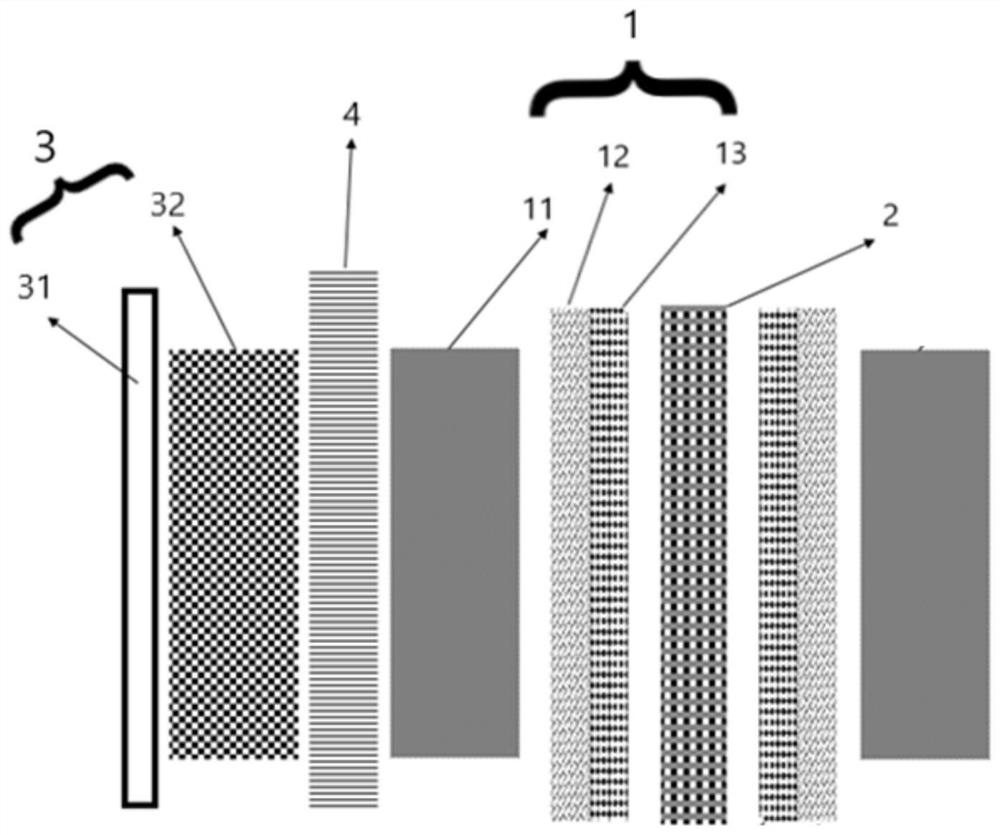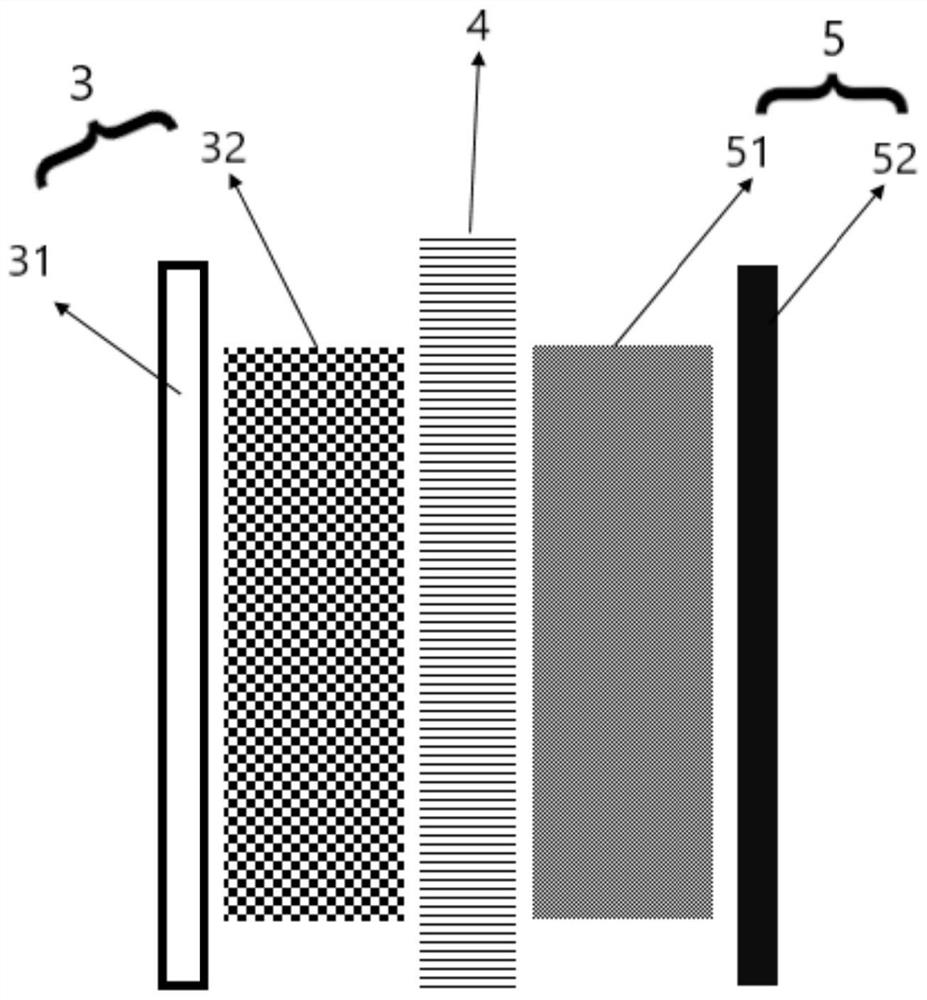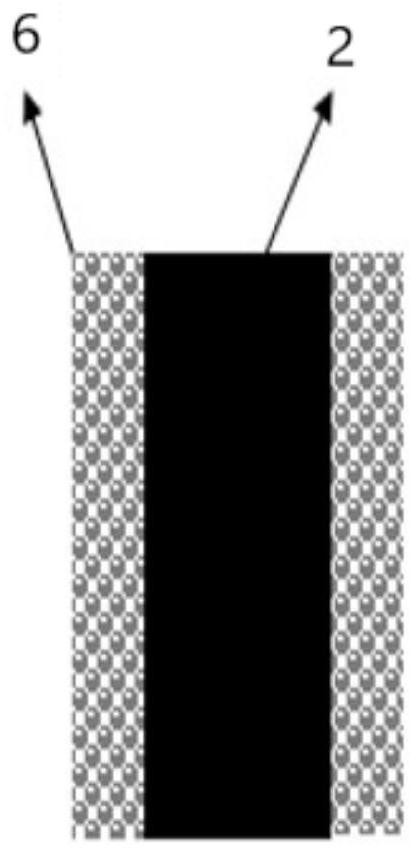Lithium-ion battery repeating unit, lithium-ion battery and method of use thereof, battery module and automobile
A lithium-ion battery and repeating unit technology, applied in the direction of secondary battery charging/discharging, battery electrodes, non-aqueous electrolyte battery electrodes, etc., can solve the problems of low battery energy density, safe battery safety, etc., to overcome poor rate performance, Effect of reducing battery self-discharge and improving battery cycle performance
- Summary
- Abstract
- Description
- Claims
- Application Information
AI Technical Summary
Problems solved by technology
Method used
Image
Examples
Embodiment approach
[0082] In a specific embodiment, the metal body with surface pores may have micropores. For example, in one embodiment, the metal body with surface pores may have two main surfaces perpendicular to the stacking direction, wherein at least one of the main surfaces may be Micropores are formed. Among them, micropores of a certain depth can be formed on the non-porous base metal by methods such as in-situ generation, chemical and physical deposition, and corrosion formation, so as to obtain a metal body with surface pores. For example, use micron copper or copper alloy foil, and use physical vapor deposition (PVD) or chemical vapor deposition (CVD) to deposit a certain thickness of porous metal copper or carbon on the two sides of the foil; or, micron copper or copper The alloy foil is placed in an acidic or alkaline chemical corrosion solution and corroded for a certain period of time to form corrosion holes on both sides.
[0083] In another preferred embodiment, refer to Fi...
Embodiment 1
[0108] 1. Preparation of positive electrode: Weigh the positive active material (LiCoO 2 ) 1kg, conductive agent carbon nanotube 20g and binding agent polyvinylidene fluoride (PVDF) 20g join in the N-methylpyrrolidone of 1kg, then stir 30min in the stirrer, form stable and uniform slurry; The slurry Coat evenly on aluminum foil, transfer to an oven to dry at 80°C; press the dried pole pieces under 2MPa pressure, cut them into 50mm×75mm pole pieces, and spot-weld the positive lugs, surface density 30mg / cm 2 .
[0109] 2. Preparation of the separator: take a common commercial 11 μm PVDF-coated lithium battery PE separator and cut it into 77 mm wide.
[0110]3. Preparation of the first negative electrode: Weigh 100g of nano-silica powder as an inorganic porous conductive material, 10g of PVDF binder, dissolve in 150g of N-methylpyrrolidone, and then stir in a mixer for 50min to form a stable and uniform Slurry: The slurry is uniformly coated on a copper mesh (conductor layer) ...
Embodiment 2
[0115] 1. Prepare the positive electrode and separator according to the method in Example 1.
[0116] 2. Prepare the first negative electrode: select a copper mesh (conductor layer) with a thickness of 15 μm, and use magnetron sputtering equipment to sputter ZrO on one side 2 For the material, the sputtering time is 5 minutes, the thickness is 1.5 μm, the porosity of the copper mesh is 60%, and the hole diameter is 1 mm. Weigh 1 kg of negative electrode active material (D50 of 2 μm silicon oxide and carbon nanotube composite negative electrode material), 10 g of conductive agent acetylene black, 30 g of binder styrene-butadiene rubber (SBR) and 20 g of sodium carboxymethyl cellulose (CMC) Add it to 1kg of deionized water, and then stir in a mixer to form a stable and uniform slurry; coat the slurry evenly on the surface of the above-mentioned conductor layer, and then transfer it to an oven for drying at 80°C; After the pole piece is pressed under 2MPa pressure, it is cut int...
PUM
| Property | Measurement | Unit |
|---|---|---|
| thickness | aaaaa | aaaaa |
| thickness | aaaaa | aaaaa |
| thickness | aaaaa | aaaaa |
Abstract
Description
Claims
Application Information
 Login to View More
Login to View More - R&D
- Intellectual Property
- Life Sciences
- Materials
- Tech Scout
- Unparalleled Data Quality
- Higher Quality Content
- 60% Fewer Hallucinations
Browse by: Latest US Patents, China's latest patents, Technical Efficacy Thesaurus, Application Domain, Technology Topic, Popular Technical Reports.
© 2025 PatSnap. All rights reserved.Legal|Privacy policy|Modern Slavery Act Transparency Statement|Sitemap|About US| Contact US: help@patsnap.com



